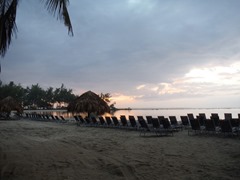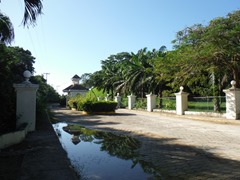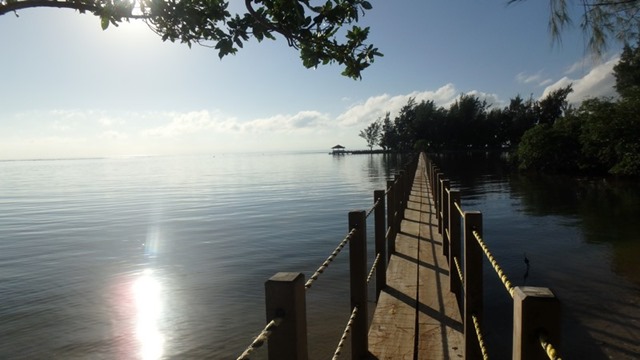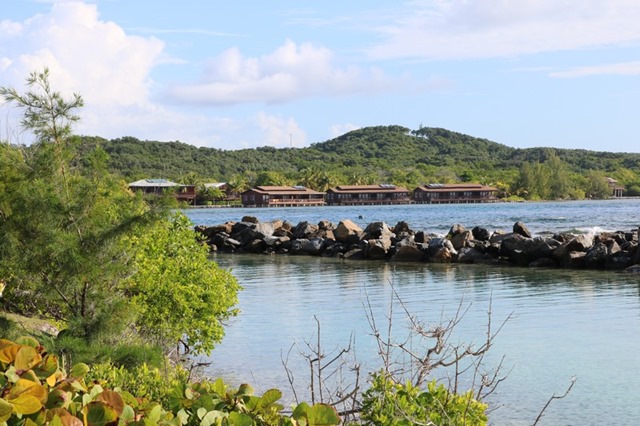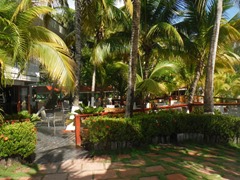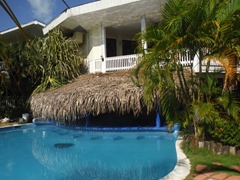Geography
The island rests on an exposed ancient coral reef, rising to about 270 meters (890 ft.) above sea level. Offshore reefs offer opportunities for diving.[1] Most habitation is in the western half of the island.
The most populous town of the island is Coxen Hole, capital of Roatán municipality, located in the southwest. West of Coxen Hole are the settlements of Gravel Bay, Flowers Bay and Pensacola on the south coast, and Sandy Bay, West End and West Bay on the north coast. To the east of Coxen Hole are the settlements of Mount Pleasant, French Harbour, Parrot Tree, Jonesville and Oakridge on the south coast, and Punta Gorda on the north coast.
The easternmost quarter of the island is separated by a channel through the mangroves that is 15 meters wide on average. This section is called Helene, or Santa Elena in Spanish. Satellite islands at the eastern end are Morat, Barbareta, and Pigeon Cay. Further west between French Harbour and Coxen Hole are several cays, including Stamp Cay and Barefoot Cay.
Location
Located near the Mesoamerican Barrier Reef, the largest barrier reef in the Caribbean Sea (second largest worldwide after Australia’s Great Barrier Reef), Roatán has become an important cruise ship, scuba diving and eco-tourism destination in Honduras. Tourism is its most important economic sector, though fishing is also an important source of income for islanders. Roatán is located within 40 miles of La Ceiba. The island is served by the Juan Manuel Gálvez Roatán International Airport and the Galaxy Wave Ferry service twice a day.
Text from Wikipedia

